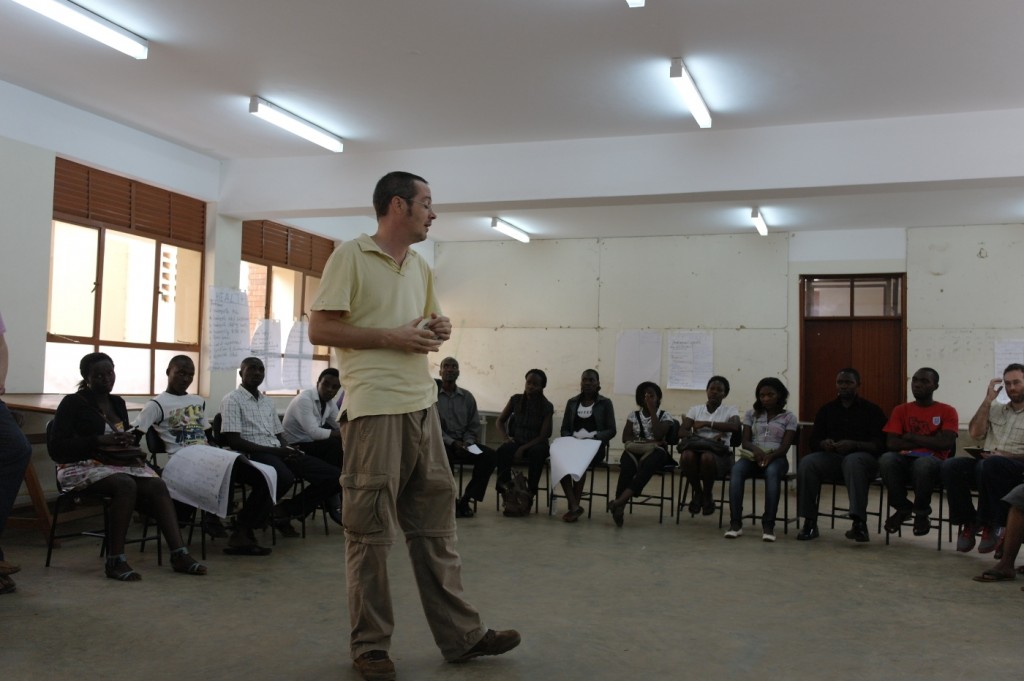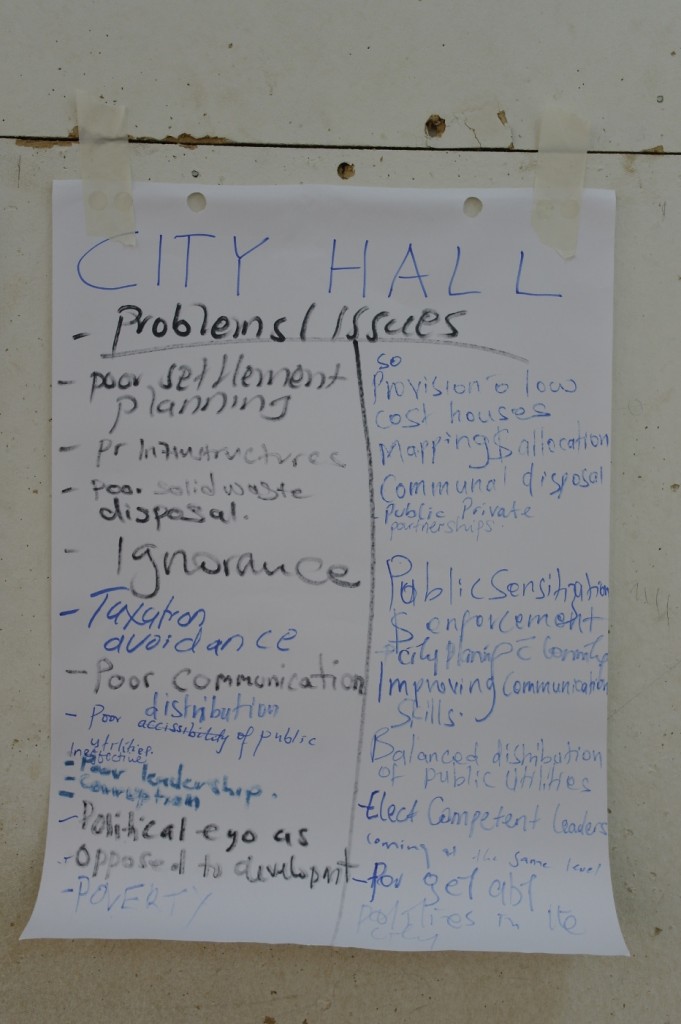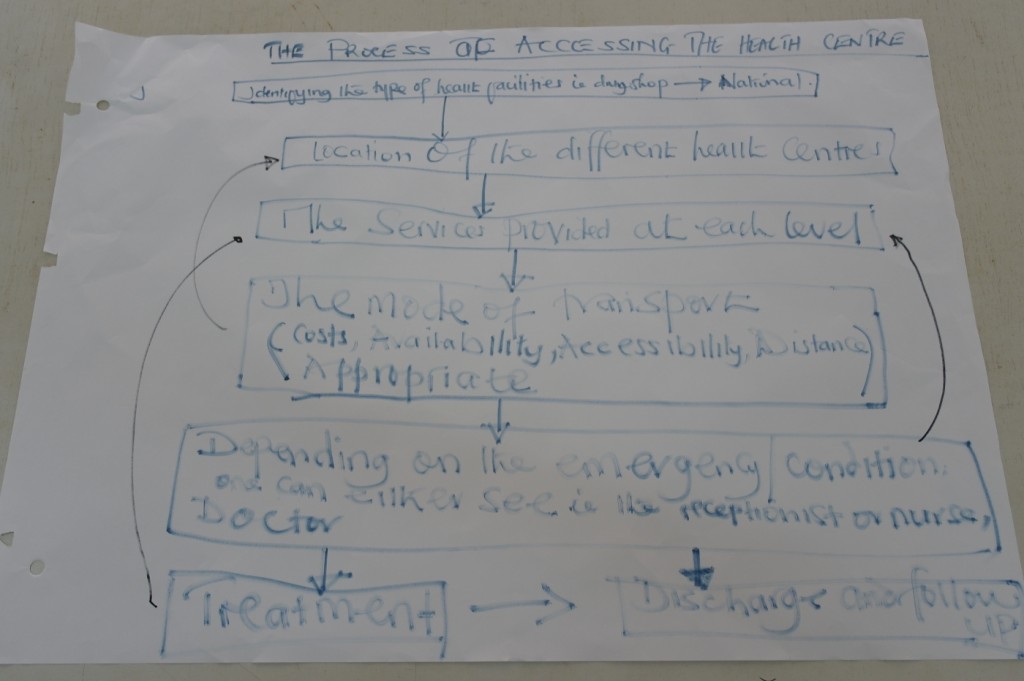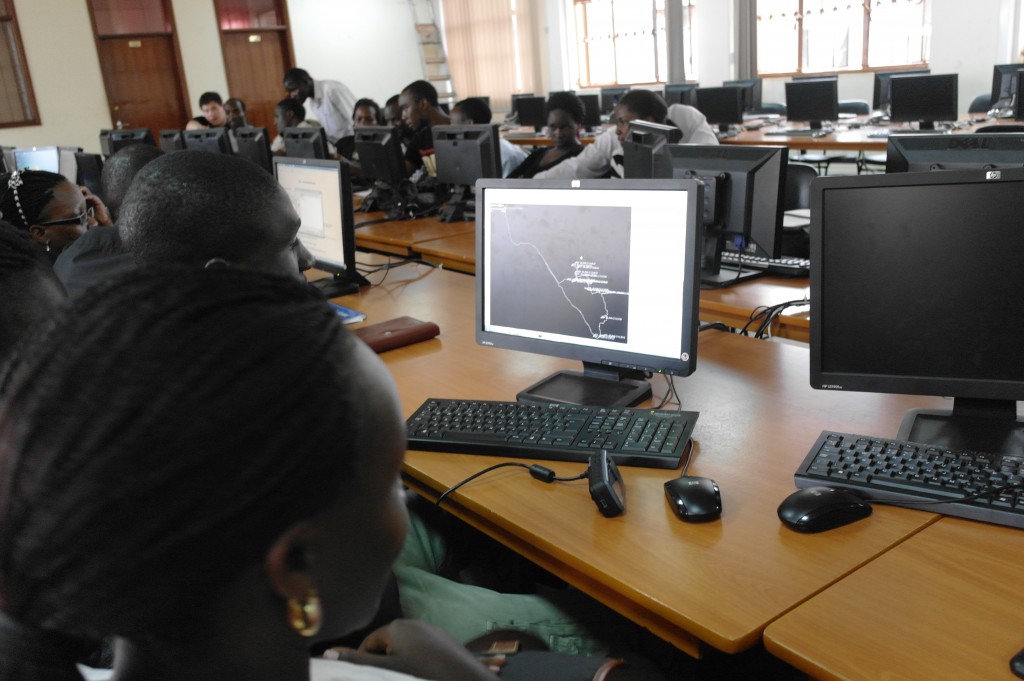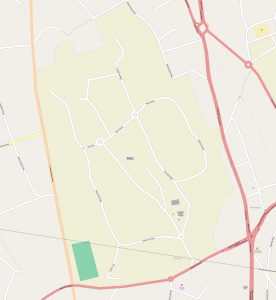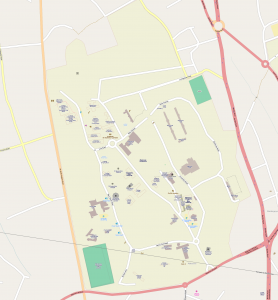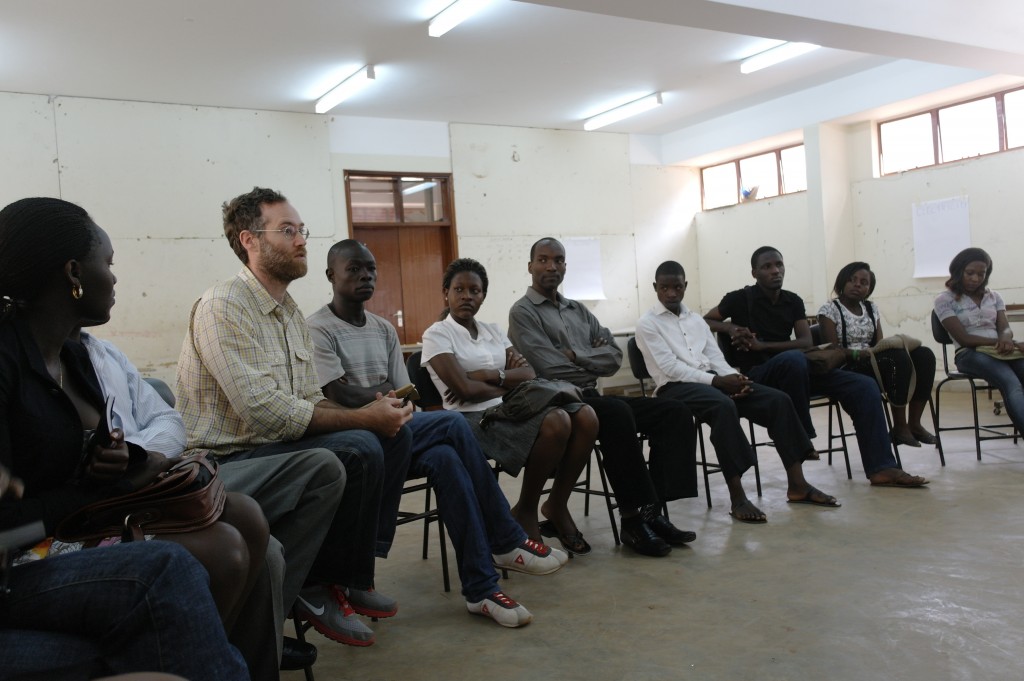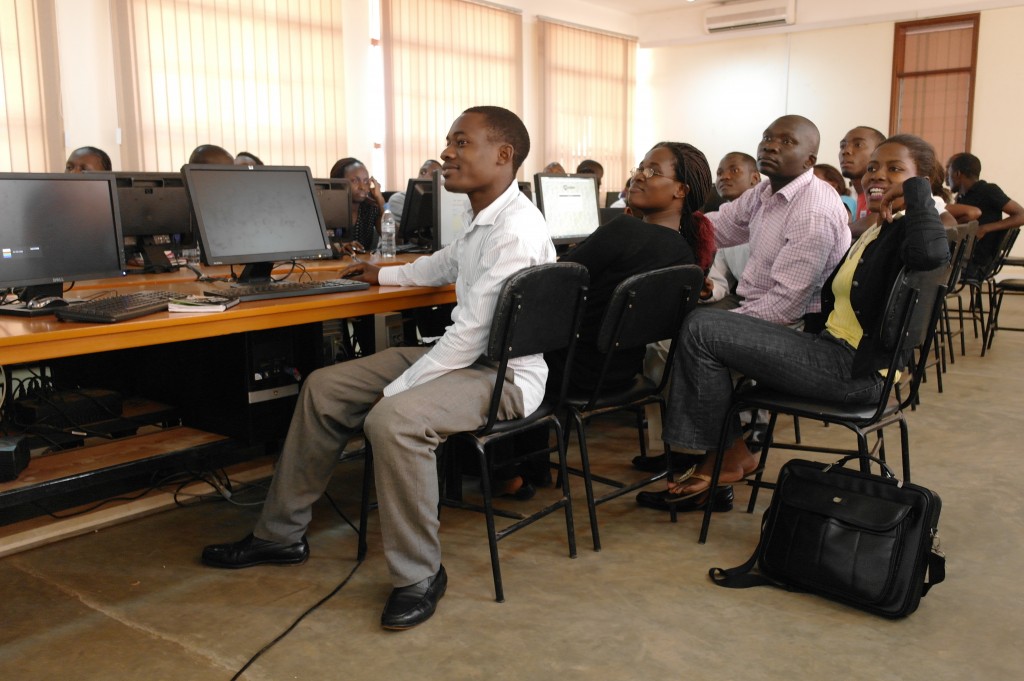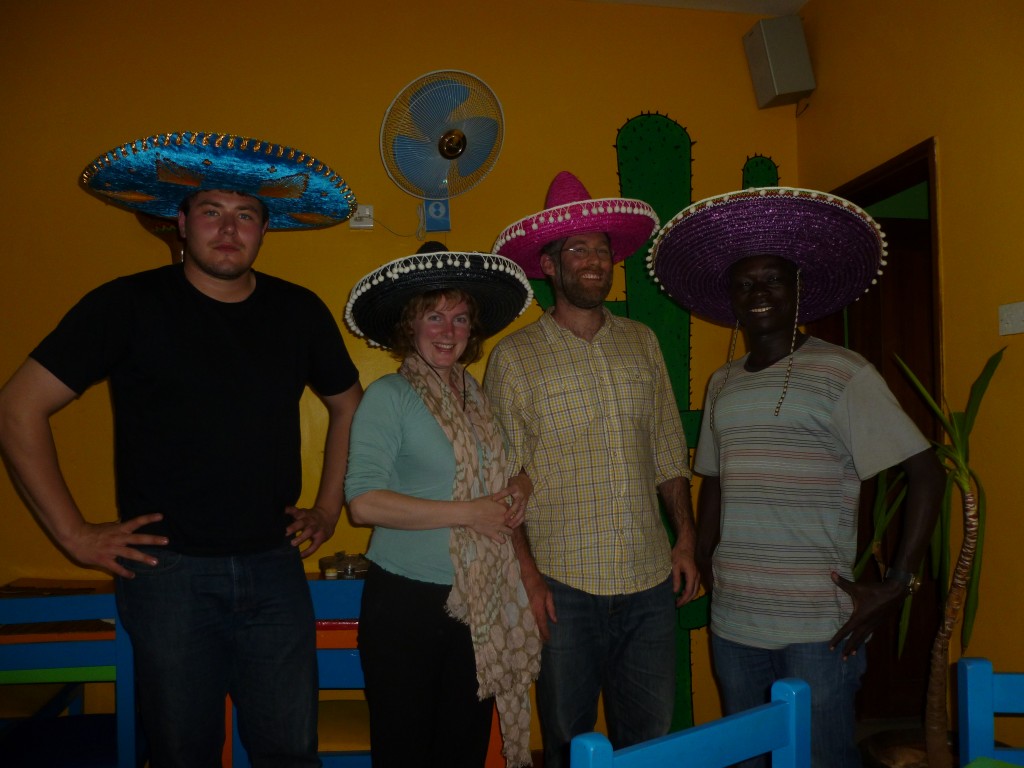Open-Community-Collaborative Data for Land Rights and Tenure
Posted: March 25th, 2014 | Author: mikel | Filed under: events, talks | Leave a comment »Presenting today at 2014 Land and Poverty Conference
Open-Community-Collaborative Data for Land Rights and Tenure
The generation, management, and distribution of land tenure and land rights spatial data is generally restricted in traditional closed information architectures, in part for legitimate legal and security reasons. However, the gap thus far in adoption of more innovative open data practices means a missed opportunity to address critical issues of accountability and access to land rights data for the most marginalized. Open data communities, such as the OpenStreetMap (OSM) project, have proven to be transformational collaboration platforms in domains like disaster response, and now several projects show promise for this open approach to land rights. This paper explores two distinct kinds of contribution from the OSM approach. Firstly examined is the direct use of OSM as a core engagement activity for advocacy, planning, and accountability by communities asserting their rights for representation and security. Lessons from projects in Kibera, Indonesia, East Jerusalem, and La Boquilla, Columbia are detailed. Secondly, OSM is looked at as a starting technical software base & community model for collaborative, open geographic data creation & sharing, forked (in the open source sense) for adaptation to the particular access rules and data structures required for land tenure registration.
OpenStreetMap is a free and open map database of the entire world, build from the active collaboration of tens of thousands of volunteers globally. It is sometimes called the “Wikipedia of Maps”, since contributing to OSM is open to absolutely everyone, and the data and code ecosystem are all in the commons, licensed for re-use and re-distribution. Such “crowd-sourced” initiatives have been held up to intense scrutiny, and have been found to meet or exceed the data quality of traditional sources, and are certainly more accessible. Thus, OSM has been adopted by companies, governments, universities, international organizations, and software developers. The domain of disaster response, particularly through the work of the Humanitarian OpenStreetMap Team (HOT), has been transformed by the practice of OSM, after the devastating 2010 Haiti earthquake, where OSM became the base map for the response. More recently, Typhoon Haiyan saw over 1000 contributors map millions of features and damage point, for use by organizations such as the American Red Cross, UNOCHA, MSF, the World Bank, and the New York Times.
In the first part, community mapping in OSM has proven a valuable supplement to official tenure process, or to help communities advance their rights agenda. A core principal of OSM is that the most accurate map will be made, with the right basic training, by people residing in a location, not necessarily survey and cartographic experts. This especially holds true in communities at risk of dispossession by authorities, where official maps may portray a geographic mis-reality more conducive to their plans, or the community itself may not be physically accessible and suspicious of outsiders. Take the Kibera slum of Nairobi, the object of many controversial upgrading and resettlement plans, was a blank spot on official maps, until the public infrastructure (including roads and paths, sanitation infrastructure, health services, etc) was mapped by Map Kibera in OSM. This project (and now organization) taught young residents the technology to make the map themselves, and represent their community. Being a completely open system, the goal was not to map private residences, but to make visible the community as a whole, and of particular interest here, track the events and reactions to upgrading programs. Spatial data is used as the context for citizen media, in the form of bloggers and videographers, who geolocate stories on the Voice of Kibera, an instance of the Ushahidi platform. Stories have covered demolitions in Soweto East, resettlement to the “decanting site”, and most recently efforts for the Nubian community (the original settlers of the slum) to gain title and recognition. The community, evidence based perspective, linked to specific locations, shared openly, both online and offline, has provided a much needed monitoring and accountability function in these contentious processes.
Another example is found in Indonesia, where HOT undertook a wide ranging effort to collect data in OSM for disaster preparedness risk models. This project involved training and connections with a large number of actors, from disaster preparedness agencies of the Indonesian government, to university students, to city officials, planting the seed of an open data community in Indonesia. As is often the case with open data, unexpected uses and connection arose, specifically with the ACCESS civil society strengthening program. Part of ACCESS activities involved “poverty mapping”, participatory mapping of community infrastructure and socio-economic data, a step to create community development plans. These poverty maps were created on paper in a facilitated process, and while quite detailed, beautiful and useful, the opportunity for re-use, analysis, and access to these maps were limited. HOT adapted the OSM workflow to these participatory processes, which allowed for better and easier data collection, and connection into a host of open source tools to visualize and analyse that data. A major change to OSM tools was made to handle private and secure data. While communities were comfortable sharing openly geographic data on community infrastructure, they did not want to share detailed socio-economic information. To accommodate that, the OSM editing tools were adapted to work with multiple databases, both the open, public database, as well as private database. This provides a means to selectively share community data, without invoking another tool.
In the second part, OSM is examined as both a technical and community starting point to open creation and sharing of tenure data. It’s entirely fair to say that OSM has been the most successful approach to collaborative geographic data ever. That’s due to some key decisions of the architecture, such as flexible tagging rather than rigid ontology, and transparent history of individual contributors. The software ecosystem is quite robust, including what might be the most user friendly map editing client developed, iD. The community approach is decentralized, distributed responsibility, yet quite unified through clear purpose. However, not all kinds of data are appropriate for OSM, as OSM focuses on visible infrastructure, land use, and some administrative boundaries, but by community convention, does not contain cadastre (among many other things). As well, OSM is completely open for anyone to edit, and that is simply not possible for land tenure data; there must be some process for validation and protection of submissions. There are other projects that have started with OSM architecture and principals, and adapted to a different database. For instance the USGS prototyped its use for the National Map; the Moabi project is deploying OSM architecture for collaboration on natural resource extraction data; and the before mentioned poverty mapping project in Indonesia. In order to support approaches like the Social Tenure Domain Model, there are very particular adaptation requirements to OSM. Access control to both data editing and data structures is required, and experiments show that OSM architecture is amenable to such changes. Just as crucial, OSM makes individual contributors visible, and relies on their participation, communication and collaboration. Despite the necessary institutional element of land tenure, a successful program must retain such individual empowerment.
Media and Conflict in Myanmar, comments from a technologist
Posted: January 27th, 2014 | Author: mikel | Filed under: events, talks | Leave a comment »Last week I was invited to respond at the launch of the US Institute of Peace Media and Conflict in Myanmar Report. It was a humbling honor to share the technologist perspective among such an experienced and learned gathering, and for a really excellent report, recommended reading. Another good recent report, this on the political economy of Myanmar from the Kennedy School is also worth a read if you have interest there. And this short post from OKFN on the challenges of open knowledge in Myanmar quickly touches on many points relevant to ICT.
Transcript of my remarks are below. There were too many other interesting points to capture them all, but here are a few that I noted. Aung Din recommended creation of an independent media monitor, which would simply “name and shame” out of line uses of the media (to promote private interests, or to stoke tensions); sounds substantially more effective and openly democratic than any official government media controlling body. Joshua Haynes asked the question of how donors can coordinate, and support organic, ongoing processes; that’s a relevant question for this field anywhere, but especially so as internationals accelerate exponentially in Myanmar. Others called for journalism training to emphasize digital literacy, and other innovative practices (I’d include GeoJournalism among those). Mobile networks are set to accelerate rapidly (grow from 17% area coverage to 50% in 12-18 months from now) but still, much of the interesting technical community practices are now mechanical rather than informational. Noel Dickover floated the idea of Maker Faire Myanmar, a super idea, if backed by a great local team along the lines of Maker Fair Africa. Finally, was mentioned that this year will be the first census of Myanmar in over 30 years, and population estimates for the country vary from 60-70 million; hopefully this is an opportunity for more open data and transparency in Myanmar.
My remarks…
I’m going to begin with some of my experiences working with tech activists in Myanmar; then share what I think are instructive experiences working with technology and peacebuilding in Kenya, and conclude with a few specific responses to points from the report.
Typhoon Nargis in 2008 devestated Myanmar, and was my first introduction working with technologists there. This was in the very early days of the Humanitarian OpenStreetMap Team. Our volunteer community produces geographic data to support the work of humanitarian disaster responders, which can be seen most recently in the Philippines and Typhoon Haiyan. Timely and accurate maps of affected areas are crucial to coordination of response, they are often incomplete or inaccessible, and that’s where we help. In 2008, we still had not proved this ability, but yet, I connected with technologists in Myanmar who were very eager to see if OpenStreetMap could make a contribution. The biggest hurdle was the limited access to the greater internet; using our services would simply be too slow, even for the small minority of people who had access. So I was completely bowled over to learn that these guys installed their own copy of the OpenStreetMap system on a local server. They could do that because the code is open source, but it was not a simple install by far. The motivation and skill of these guys, working with limited means, greatly impressed me. And I saw that with the right opportunities, the brilliant and eager people of Myanmar could quickly use technology for great benefit.
The next year, I connected with expat activists who were concerned with the Shwe pipeline. Very little information was available publicly at that point. That included the precise route of the pipeline, and especially information on communities directly affected by the infrastructure. We were looking at how to map that route openly, again using OpenStreetMap, and collect sociodemographic data and stories from the ground. There was simply no way to find this kind of data, so our effort stalled. No matter what your opinion on the Shwe pipeline, and natural resource extraction is such a contentious issue economically and environmentally, my feeling was that there should at least be clear and accessible information of the common facts on the ground, and platforms for presenting different views, and now that the pipeline is operating, tools to monitor all aspects of the impact of the pipeline. We can see this happening now. I’m pleased this vision of open data and broad communication on a crucial issue has found root in Myanmar.
You also may have heard about the BarCamp Rangoon events. BarCamps are “un-conferences”, where the schedule is set the morning of the event. Anyone can present anything they want, and people “vote with their feet” to choose what sessions are the most happening. And Rangoon has the largest BarCamps in the world, an astounding 6400 participants this year. I can’t even fathom that scale, especially in the political environment when they began there in 2009. But the tech community of Myanmar made it happen. This speaks to the power of tech and open source culture. The focus of much of the BarCamp is on technical details of computing, and sharing knowledge about skills, economically important skills, and those can often fly under the radar of controversy. But the opening is there for more, in an event style and a culture that expects everyone to contribute, that focuses on understanding the full scope of a problem out in the open, but brings people face to face to talk to each other as human beings, and focus on finding solutions and accomplishing things. For all sorts of conversations, I think we can all learn from the BarCamp model.
Now I haven’t yet made it to Myanmar for a BarCamp, but I’m certain with this opening environment, that’s in my future. A great deal of my work the past few years has been in Kenya, where I founded an organization with slum dwellers in Nairobi called Map Kibera Trust. Slumdwellers have taken the skills of making maps in OpenStreetMap, and citizen reporting with SMS and Ushahidi and video, and used those tools to represent their communities, essentially put themselves on the map. They’ve recently completed a technology and peacebuilding project for the Kenyan election this year, supported by USIP, and I wanted to highlight a few aspects that I think are relevant. This was the first election since the 2007-2008 post election violence. The team mapped ward and constituency boundaries and distributed printed “election maps”, and did citizen, community based reporting on all phases of the election, from voter registration, to primaries, campaigning, and aftermath. While this was all excellent technical work, it was only able to directly impact due to the great amount of work in peacebuilding and networking which Kenya has seen since 2008. Mosts of that happened offline, people directly talking to each other, organizing, deciding to work together for peace. And at the same time, technical communities in Kenya gained stature, particularly projects like Ushahidi, and gathering places like the iHub. Map Kibera was able to link to these peacebuilding networks, and these technical networks, and complement this work. This collective build up of a culture of peace in Kenya, in large part played out in the media.
So some of my responses to the recommended activites of the report should come as no suprise. Mobile technology for early warning and crisis response. Yes absolutely, can only emphasize the potential of this from my experience, and other projects from Kenya like Sisi ni Amani, when part of a broader context. Help people to understand the best social and technical practices. This is poised to be very important as mobile technology spreads rapidly through Myanmar.
On the issue of hate speech in social media, I do not want to minimize these realistic concerns, but from my perspective, I must sound a warning. My inclination when observing efforts to neutralize extremist voices on social media anywhere is, to wonder how any system of control itself would be held accountable. Who is to judge what is acceptable public dialogue and criticism and legitimate dissent, and what is dangerous? Especially in a place emerging from authoritarian rule, the temptation to control must be very high. There have been issues in the past. During the Saffron Revolution, photos of protests were posted to Flickr, and to great worry of people I knew working there, those photos were apparently used by security services to identify individuals. Facebook and Google are private companies, and do have relationships with many governments, and do act on requests, so finding a working relationship with them and others is important. Though as you can see with the NSA revelations, we still haven’t found the proper limits that preserve legitimate privacy and freedom.
However, I do have some ideas of the risks with social media, and what could become explosive, and that’s why I think it’s imperitative to invest in processes of dialogue, both offline and online, and in training in responsible reporting and technology. The initiative for training in journalism is right on. Let me suggest broadening that to non-traditional journalists, to citizen and community journalists, and connect all of that training to open digital culture and technologists.
That is what I imagine the Peace Technology Innovation Workshops can accomplish. Getting people together from different backgrounds, and different skill sets, to talk and work face to face, is excellent. I suggest making these workshops not only talk, not only skills training, but places where things can practically happen. One simple means to do that is through OpenStreetMap mapping parties, where people would produce open data right there. Also, think about such initiatives participating in other ongoing events, and connect to those, like the BarCamps.
And let me conclude with some suggestions I didn’t spot in the report. First, physical innovation spaces have been key to anchoring these kinds of initiatives. In Nairobi, the iHub has been instrumental in providing a neutral meeting ground, where things can happen. Encourage hubs in Myanmar. Second, information security and privacy tools need to be on the agenda, so that journalists and technologists and citizens can be sure they truly have liberty to share their ideas without fear. Finally, embrace the Open movement. Open source software is not only accessible, it’s modifiable for new purposes. Promote open data initiatives, both from data held by the government, and data created by citizens. And apply these both to open exploration. There are so many areas where media and technology can have impact in Myanmar, for urban issues, the environment, a responsible tourist industry, health, education, cultural preservation, and many other things that no one has even thought of yet. Let’s help Myanmar to embarce open culture.
Thanks very much.
Data.Gov and Wikimania
Posted: July 19th, 2012 | Author: mikel | Filed under: events, talks | Leave a comment »
Busy conference week last week with Wikimania and Data.gov.
At Data.gov, gave this presentation, (and video, “Policy Track – Engagement Around Open Data”, around minute 35:00), another variation on the theme of how open community mapping represents a fundamental change to dynamics of development. Keeping with the theme of government open data, this time looked a bit more in depth at how OpenStreetMap and governments interact. Video coming soon.
Impressed with the level of discussion around OpenData. We are steadily moving past the hype (even if we’re still amazed that the Secretary of State gives speeches about Data), and grappling with the real issues of using data … both technically and especially organizationally. Enjoyed sharing the stage with Nathaniel Heller and Steven Davenport for our panel, actually had a really engaging discussion with the audience, maybe due to a combination of Tim Davies skillful facilitation and our unabashed optimistic cynicism. Linda Raftree has a good summation of the emergent themes of the conference. This built on well from the Open Data for Development Camp event back in Nairobi, anniversary of OpenDataKE; iHub research is doing a nice series on the search for real impact in Open Data.
Enjoyed giving this talk at Wikimania (video, slides). Wikipedia is OpenStreetMap’s “big sister”, and we have so much to learn from them. My other experience of Wikimania was in Alexandria back in 2008, which created the opportunity to throw the first mapping party in Egypt (before GPS was legalized!). I took the opportunity to not only go over the familiar ground of OSM, OSM+Gov, OSM in development, but also look at how OSM and Wikipedia communities converge and diverge; Frederik does a more thorough write up of these two communities. Also had the opportunity to learn about the amazing mapping work happening within Wikipedia, including localized maps based on OSM, and the mind-blowing features of WikiMiniAtlas.
Makerere Workshop, Connecting with Service Providers
Posted: July 17th, 2012 | Author: mikel | Filed under: events, uganda | Leave a comment »This post, written in collaboration with Kim Nooij of Fruits of Thought, dives deeper into one corner of the Makere Workshop, which brought “service providers” directly into the mix.
The idea was for teams to rapidly get a sense of the challenges of real life urban problems, brainstorm ways that maps and reporting tools could improve processes, and design a map and process with a close look at real implementation.
Reinier Battenberg facilitated the session, setting the goals, and giving each guest a chance to present their work and challenges
- Umeme Ltd is the biggest energy supplier in Uganda with national coverage (excepting Northwest of Uganda), directly providing power to consumers, downstream of energy producers. This means they take the full force of public frustration when there’s a problem anywhere in the system. They deal with issues like power theft and old decaying power poles, billing complexities, and challenging customer service.
- Makindye Division is one of the 5 divisions in Kampala with approximately 600,000 residents. One main issue is sanitation: cleaning trenches, collecting garbage and emptying public toilets in the informal settlements. Lack of adequate sanitation has led to malaria outbreaks, and citizens have no option but to dump trash clandestinely at night. Structures are constructed at night, encroaching on land set aside for dumping.
- National Water & Sewerage Corporation, providing services nationwide in Uganda, are held responsible clean water, but without clear development plans from Kampala and other cities, it’s unclear where infrastructure investments should be made. They want to connect the 37 informal settlements in Kampala, but don’t know where they are, how many people live there, or what services they already consume. Coordination with other service providers is lacking, yet they’re all interconnected.
- Women in Uganda Network (Wougnet) suports women’s groups, with one focus on the accessibility of health facilities and medical services. It’s often not known what services are in which place, or whether drugs or doctors are available. There’s much to improve in connected the right services to patients.
- Finally, Kepha Ngito. Executive Director of Map Kibera Trust brought out some of the challenges directly facing residents of informal settlements, who have difficulty coordinating and prioritizing needs for the community, and effectively engaging with service providers and authorities.
We broke out into “speed geek” mode, with each service provider rapidly engaging with a 1/5 of the group for 5 minutes, brainstorming possible ways that the tools could address their issues. The first switch raised groans of frustrating at the premature end of good conversations, but the group soon got charged up and rapidly dived into each new setting. The frustration is part of the effectiveness of the technique, brains and mouths start working faster and everyone is eager to share more and dive into more details. Coffee break was really high energy, leading to a second phase of more in depth discussion with only one group. The teams sat together for 45 minutes, to choose a “map” and “process” to design and present back to the group. We gave them four questions to consider:
- How does the process work?
- Who are the stakeholders?
- Who contributes to the map?
- Who uses the map during the process?
For us facilitators, it was fascinating to bounce from one group to the next, sampling the different directions and tenor of discussions. In part due to the personalities of the service provider and students, in part due to the nature of the issue, the discussions ranged from somewhat top-down, to participation among everyone, to even a bit contentious. And that was totally all right, since in practice you’d see this breadth of group dynamics anywhere.
It came time for all the groups to report back.
The Umeme team drafted this detailed workflow of how their customers receive feedback of power issues. Using map data, customers and problems can be located, and along with time estimates can be shared with customers, both on request when customers call in, or pushed out to areas where problems are happening.
Makindye Division looked at better communication on issues within the community, and more community involvement through partnerships with local organizations and mapping.
National Water & Sewerage covered the challenge of coordination, and how maps and data sharing could lead to more cooperation between service providers.
The Wougnet team focused on access to health facilities, and the difficulty of receiving treatment when the only choice is long travel to several health centres to find where the right services are provided. The processes designed looked at increasing public awareness about the supply of drugs and services provided in each center through systems to document stock and locations.
Finally, the Kibera team talked about mapping and reporting tools deployed into the community … sounds familiar.
It was a really engaging morning, and while we didn’t crack the ultimate solution to any of these challenges, I think everyone came away with a better understanding of the challenges these service providers face, and some of the potential ways to address these issues with not only technology like maps and reporting, but consideration for how such tools fit into the entire system.
Sincere thanks to everyone.
From here, we’re hoping that the pieces come together soon for this practical learning to continue at Makerere. More to come.
Connecting Kampala: Makerere University Mapping and Reporting Workshop
Posted: July 5th, 2012 | Author: mikel | Filed under: events, uganda | 3 Comments »June and the first part of July has had GroundTruth pinging through East Africa … the capitals of Dar es Salaam, Kampala and now Nairobi. We’ve met to help figure out the shape of future projects, held workshops with slum-dwellers students and government-staff, attended conferences, checked in with old friends and probably met hundreds of people. Was so nice to link together the mapping communities throughout the region, and note how each is developing in its unique way. This post focuses on the middle part of the trip, which revolved around a two day mapping and reporting workshop at Makerere University in Kampala.
Our co-conspirators for the week were Fruits of Thought. Douglas, Ketty, Kim and Renier have been holding mapping days over the past year, steadily building OpenStreetMap data and community in Kampala and throughout Uganda. They’re now ramping up for a 5 city mapping tour, supported by Indigo Trust. We were also joined by Mark Iliffe, who’s booming Navy trained voice and experience in mapping (we worked with Mark in Tandale) were key assets for wrangling the workshop group; and Kepha Ngito, executive director of the Map Kibera Trust, bringing the his experience and perspective. The collaboration started pre-arrival, right on the OSM Wiki. Then, we spent a few days camped out on the porch of the Mountbatten ranch, drinking plenty of coffee, and mashing together lots of ideas into what was a successful workshop, and I think a model for future workshops. (Douglas, Ketty and I had the special pleasure of configuring new GPS units, using this guide, which Douglas even updated in parts, and I hope we can integrate into LearnOSM.)
The workshop brought together 20 first year urban planning students from Makerere, eager to gain new skills in real world situations; and 8 staff from the Ministry of Lands, Housing and Urban Development, who are looking to see how community generated information can help inform larger programs. All was held in the remarkably good and spacious facilities at Makerere. More on what shape this all can possibly take hopefully soon, we’re waiting to hear more.
Mapping, you know
Day 1 was very familiar territory for all of us. The goal was to bring the group through the entire process of OSM, and this went pretty much as well as you could ever expect. Not unexpected that this would be a sharp group. Here’s the before and after.
But before all that, we wanted to set the space, and emphasize this was the participants’s workshop, with their responsibility to guide it themselves in order to get what they want out of it. Took a few tricks from the epic facilitator Gunner, especially from the useful Facilitation Wiki, and threw in some of our own tricks. Of course Opening Circle, with quick 3 part introduction (name, affiliation, mood in one word). And to warm up our voices we went with “What was your first experience with a computer?”, which is always interesting, and in this case clustered around a first experience in high school for the Ugandans (who seemed to have had a nicely equipped education), and a bunch of us who first touched a computer before most of the students were born. To get moving, we “mapped with our feet”, mapping out our home cities by placing ourselves around the room, and then set up mapping groups by bringing together someone each from the SW, SE, NE, NW of Uganda.
All I know is facilitation is hard, and since then I have studied keenly how the events in Nairobi, ODDC and Global Voices, pulled together creative spaces.
Got some good feedback at the end of the first day. We should have emailed out some advance notice of the order of the day and the requirements, and started the discussion of what everyone was hoping to get from the event (yes, read that too late in the Facilitation Wiki). Handouts would be helpful (or at least advance link to LearnOSM). And when we divided the mapping pie, the participants asked for more clear guidance on which areas they should map, because groups ended up overlapping. GroundTruth usually leaves this admittedly confusing step to the participants, because thinking through this and debating with each other is a great way to warm up the geographic collaboration; perhaps we need to think more on how to guide this step better.
Reporting
Day 2 opened with so much, we’re going to cover that in an upcoming guest post by Kim from Fruits of Thought.
In the afternoon, we dove into reporting. Erica led a discussion on why community reporting is important and the role it plays in engagement, empowerment, and connection; what kinds of things to report; the spectrum of kinds of reports in traditional and social medial; and how to report. For a workshop, one of the easiest ways to get rolling is setting up a Crowdmap instance, Makerere 2012, so we went upstairs into lab for a demo of Ushahidi, and examples from Kenya and Tanzania. The groups that formed yesterday for mapping came together again to produce at least one story on Ushahidi, combining text, images, and the location on the map they created the day before. The focus: their community, the University, and what kinds of things needed attention.
The lab really started buzzing. After an hour after concerted effort, the groups started presenting back their reports.
They were excellent! Just a few are this report on waste management at the University, local culture 🙂, and more…

… including some feedback on the workshop itself! Afternoon Tea Break Missing on Day 2 was an aweseom sly joke but great example of what’s possible with public feedback. The tea break was missing on day 2, and some complained, and photographed the empty tea table, but through the process of reporting learned that it was democratically voted on. Myself, the “service provider”, was able to get in and comment, and encourage them to speak up more in democratic processes! I also learned, even if no one is taking tea enthusiastically (like on day 1), never a good idea to skip the tea!
Food
And on that note, a shout out to the Food Science Kitchen at Makerere, who fed us well over the two days. And a super wow to the Little Donkey, the Kampala based social enterprise serving the best and most suprising Mexican food I’ve had outside of North America. They also house s7 computer school, which hosts regular mapping workshops. Wow. My euphoria was aided by an epic boda boda ride right across Kampala with my life intact.

